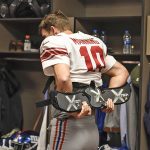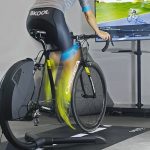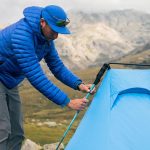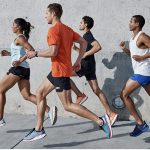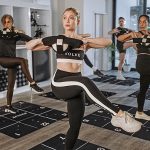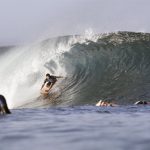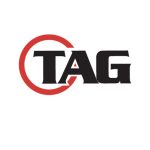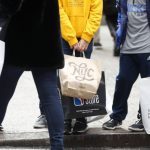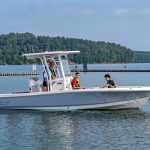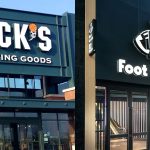The Back-to-School season for athletic footwear proved to be challenging again this year. Athletic footwear had been running a solid high-single-digit increase all year, but flattened out just as the all-important BTS season began.
One clear trend that Sports Executive Weekly has seen while studying footwear sales on an industry-wide basis is the move to a buy now/wear now mindset that sees the seasons coming later and later each year. As with Christmas, the consumer is waiting longer to make purchase decisions; whether it is to take advantage of promotions or to wait until they can assess the fashion trends, the result is less early season business. In fact, the last two weeks in September (which are not in the BTS sample) in athletic footwear have shown tremendous year-over-year increases.
For the purpose of this review, Sports Executive Weekly takes a look at the eight weeks that comprise Back-to-School that account for nearly 25% of the total athletic footwear sales for the year. (All figures in this report are based on SportScanINFO data for the period from 7/17/05 to 9/17/05.)
Overall sales increased in the mid-single-digit range over the BTS period, which basically equates to a flat to low-singles comp increase. Average selling price was up in the low-singles, accounting for all of the gain.
By category, the biggest growth came from sandals, which should come as no surprise. Nearly every conference call that discussed July and August retail sales highlighted the strength of the category and its impact on their athletic footwear sales. As the year progressed the market has seen the impact of sandals lessen on the overall business while the athletic trend improves. adidas dominated the sandal category with a 20% share for the BTS period, with Nike and Teva each holding a 15% share and newcomers Keen and Crocs each grabbing a 5% share.
The fashion shift to performance continued in full force during BTS, with the running category posting a mid-teens increase for the period. Nike, which ran its share of the category up to 40% for the period, grew more than 25% in running, with Shox again driving growth.
Asics had the most impressive gains, with sales were up more than a third and a 200 basis point gain in market share to 10% of the total for the category. adidas had a 15% share and New Balance came in at 9% of the total. Reebok, which had been gaining share in the spring, had a 10% increase in sales in the running category and actually lost share.
The family footwear channel had the largest increase of any channel in running (up nearly 70%), with the channel-specific Nike Dual D program on fire and expanded distribution of performance styles from Asics also strong.
Basketball was an enigma, as many retailers reported weak sales in the category. But overall basketball shoes sales were actually up more than 15% for the period, due to the Jordan phenomenon. Sales of Jordan brand footwear were particularly robust during BTS, lifting the category even as mid-priced performance shoes struggled. Basketball sales again did best at the mall.
Nike grew more than 30% in basketball during BTS, growing share to 67% in the category. Overall basketball average selling price increased more than 5%. Nike (including Jordan) averaged more than $67 a pair at retail, while adidas ASP was about $47 and Reebok garnered only $38 per pair.
Some appeared to be concerned that the trend to low profile euro-style or fusion footwear was coming out of the performance category. A quick check of the above data points shows that performance is still gaining strength not losing it. The issue appears to reflect a sift from classics instead as younger consumers grow tired of tried and true white classic footwear and show growing interest in the colorful fusion category.
Lifestyle athletic was down low-singles as the fashion winds continue to shift. The only classic style that appears to be holding its own is the biggest selling style in the industry, the Air Force 1. Sales on this key style remained solid.
Reebok was hurt the most by the move away from classics. Based on the SSI data, Reebok sales in lifestyle fashion for BTS 2005 were down more than 10%. The weakness in classics hurt Reebok sales overall. Last year, classic represented about 60% of Reeboks sales at retail. This year, they were less than 50%, and trending backward. K-Swiss also struggled with this category as sales were down in the mid-singles.
On the plus side of the fusion trend were Puma and Skechers, both of whom enjoyed robust sales. Pumas expanded distribution began to pay serious dividends, driving sales up more than 50% for the period. Skechers also enjoyed tremendous growth with sales up more than 25% for BTS. Skechers new, low-ride looks were big winners at retail this year.
From an overall brand perspective, Puma (+50%) was clearly the hottest brand, followed by Asics (+33%) and Skechers (+25%). adidas and Nike showed strong growth, with both brands up in the mid-teens. New Balance was basically flat, as was Converse as the Chuck Taylor phenomenon plateaus. On the negative side, Reebok and K-Swiss were down on weak classics sales. Saucony was down more than a third, running counter to the rest of the running vendors strong increases.
Sales at retail since the BTS period have been running up in the mid-teens again. Given the continued strength of the performance running business and the beginnings for the fusion trend as well as market leader, Nikes, strong futures numbers, SEW continues to believe that athletic footwear will remain strong through the balance of the year.

